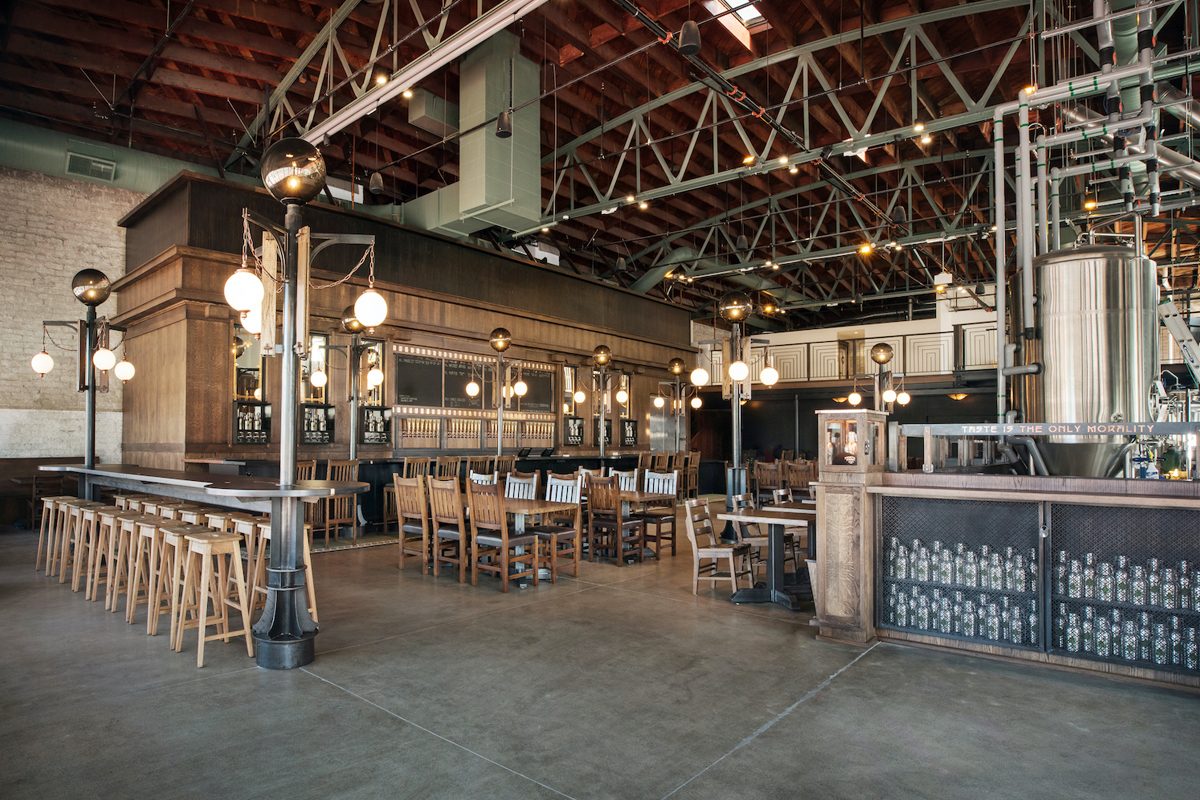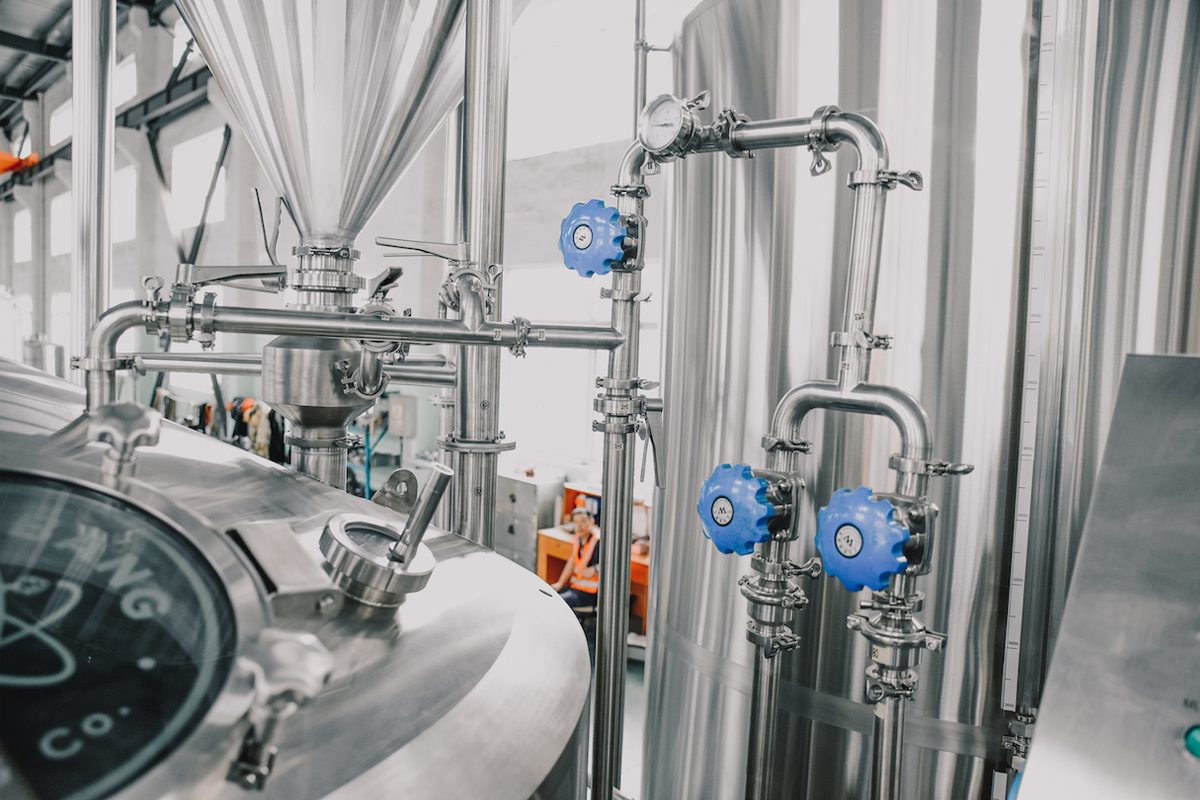
Cold Liquor Tank VS Hot Liquor Tank: Understanding Their Roles in the Brewing Process
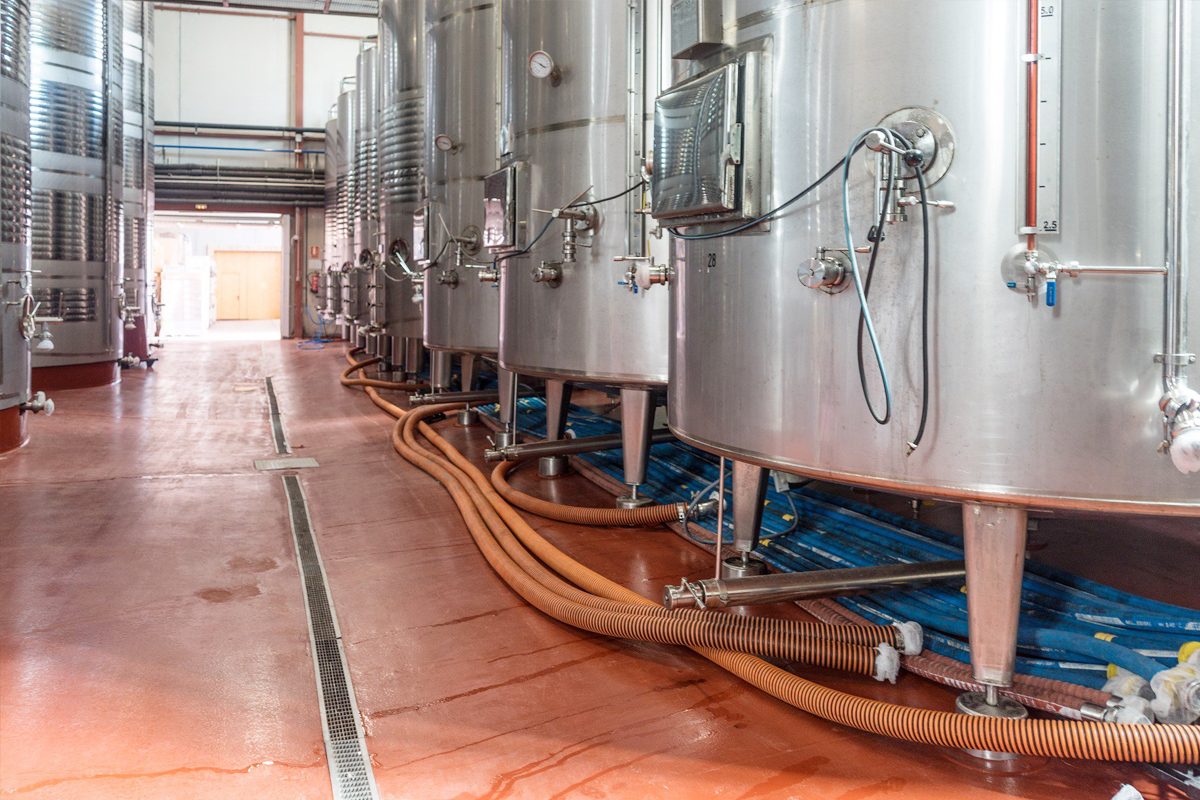
Overview of Cold Liquor and Hot Liquor in Brewing
What is Liquor in Brewing?
Cold Liquor and Hot Liquor
In brewing, cold liquor, and hot liquor serve distinct functions, with each playing a vital role in specific stages of the brewing process:
- Cold Liquor: This refers to water that has been chilled, typically stored in a Cold Liquor Tank (CLT). Cold liquor is primarily used in the cooling phase, particularly during wort cooling after boiling. It helps bring the temperature of the wort down to fermentation levels by passing through a heat exchanger, which cools the wort quickly, preventing contamination and preserving flavor. The cold liquor is also occasionally used for temperature control during fermentation or in the cleaning of brewing equipment.
- Hot Liquor: In contrast, hot liquor refers to water that has been heated and is stored in the Hot Liquor Tank (HLT). Hot liquor is used in mashing, where the malted grains are steeped to activate enzymes that convert starches into fermentable sugars. It is also used during sparging, where the grain bed is rinsed to extract residual sugars. The precise temperature of the hot liquor ensures efficient mashing and rinsing, which in turn affects the quality and flavor of the beer.
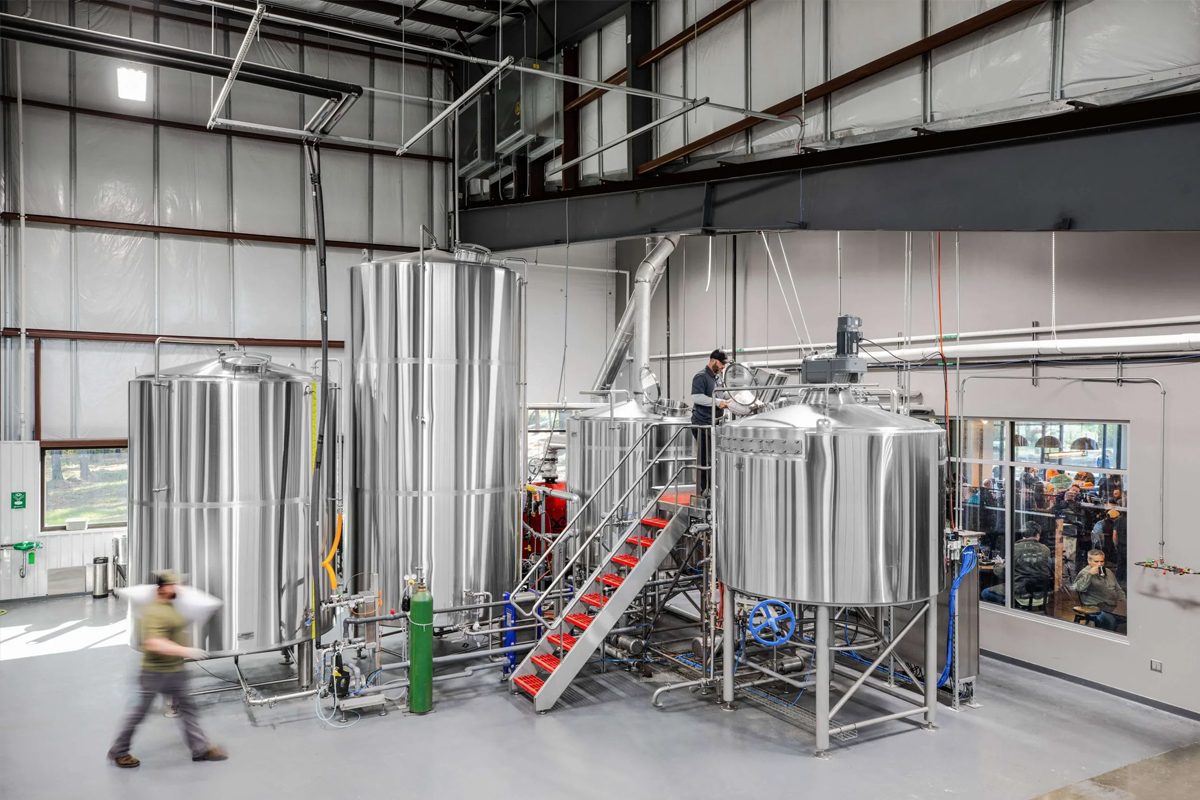
Overview of Hot Liquor Tank (HLT)
Definition and Function of HLT
Design Considerations for HLT
When designing a hot liquor tank, several factors must be considered to ensure optimal performance:
- Capacity: The size of the HLT should match the brewery’s production needs, ensuring there is enough hot liquor for multiple batches, especially in high-volume operations.
- Material: Most HLTs are constructed from high-grade stainless steel, which is durable, heat-resistant, and non-reactive. This ensures the water quality remains unaffected during heating.
- Insulation: Effective insulation can maintain the desired temperature of hot wine and minimize energy losses, especially in large tanks that hold large amounts of water.
- Heating Elements: These tanks are often equipped with heating elements, such as electric coils or gas burners, to bring the water to the required temperature.
Heat Sources and Temperature Control
One of the most important aspects of an HLT is its heat source and temperature control mechanisms. Temperature control ensures that the water is heated to the correct level for the different stages of brewing:
- Electric heating elements or gas-fired burners are commonly used to heat the water.
- Advanced HLTs may feature digital temperature controllers that allow precise adjustment and monitoring of water temperature, ensuring consistency across batches.
- Typically, water in the HLT is maintained between 65-80°C (149-176°F), depending on the brewing requirements. Accurate temperature control can help control effective enzyme activity during saccharification and effective sugar extraction during lees washing.
Importance of Water Quality in HLT
The quality of the water in the hot liquor tank has a direct impact on the flavor and stability of the beer. Water used in the brewing process must meet specific standards in terms of:
- pH balance: The pH of the hot liquor should be monitored and adjusted if necessary to optimize enzyme activity during mashing.
- Mineral content: The presence of certain minerals (like calcium, magnesium, and sulfates) can affect the fermentation process, flavor, and clarity of the beer. Brewers may treat or condition the water before it enters the HLT to achieve the desired profile.
- Purity: Water must be free from contaminants and off-flavors that could negatively affect the brewing process.
Role of HLT in Mashing and Sparging
The hot liquor tank plays a pivotal role in two key stages of brewing: mashing and sparging:
- Mashing: Hot liquor is used to steep the crushed malt in the mash tun, activating enzymes that convert starches into fermentable sugars. The temperature of the hot liquor during saccharification can help control enzyme activity, and even small fluctuations can affect the efficiency of sugar extraction.
- Sparging: After mashing, the grain bed is rinsed with hot liquor to extract any remaining fermentable sugars. This process, known as sparging, relies on water being at the correct temperature to avoid extracting unwanted tannins from the grain husks, which can lead to bitterness in the beer.
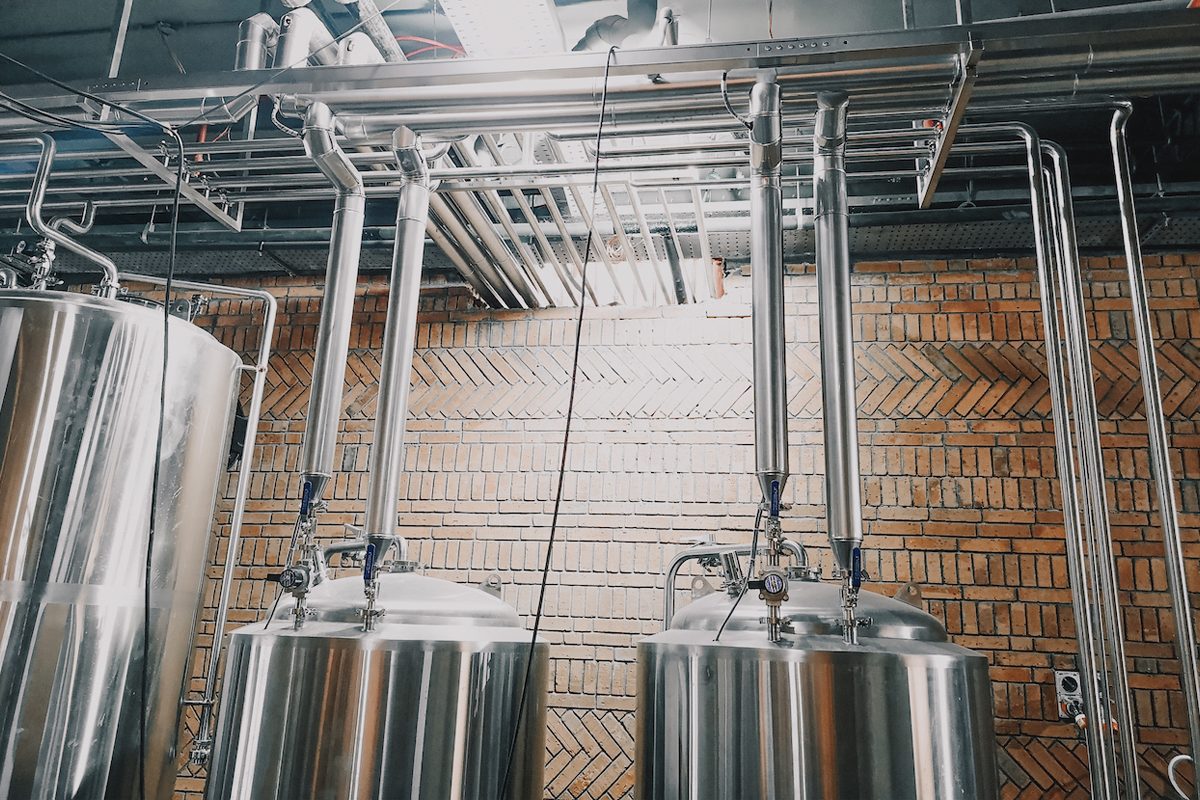
Overview of Cold Liquor Tank (CLT)
Definition and Function of CLT
Design Considerations for CLT
Several important factors influence the design of a cold liquor tank to ensure optimal functionality:
- Material: Like hot liquor tanks, CLTs are typically made from high-grade stainless steel, which is corrosion-resistant, non-reactive, and easy to sanitize. This helps maintain water purity during storage.
- Insulation: CLTs are heavily insulated to prevent heat gain from the external environment, ensuring the water stays chilled. Efficient insulation minimizes energy consumption by reducing the need for constant cooling.
- Capacity: The size of the CLT depends on the brewery’s production volume and cooling requirements. A larger CLT is necessary for high-capacity breweries to ensure there is enough cold water for multiple brewing cycles.
Cooling Systems and Temperature Management
Maintaining the correct temperature in the cold liquor tank is essential for the wort cooling process. CLTs are often equipped with dedicated cooling systems to chill and maintain cold water at consistent temperatures:
- Chillers: Industrial-grade chillers are typically used to cool the water in the CLT, keeping it at a temperature of around 2-4°C (35-40°F), depending on the specific requirements.
- Heat Exchangers: The CLT works in tandem with a heat exchanger, which allows the hot wort to transfer its heat to the cold liquor. The efficiency of this system depends on the CLT’s ability to maintain a stable low temperature.
- Temperature Management: Some CLTs come equipped with monitoring and control systems that allow brewers to regulate and maintain precise temperatures, critical for consistency across brewing batches.
Importance of Water Quality in CLT
As with hot liquor, the quality of water stored in CLT will have an impact on the brewing process. Poor water quality can affect the wort’s cooling process and potentially introduce undesirable flavors or contaminants. Key water quality considerations for the CLT include:
- Purity: The water used in the CLT must be free from impurities, contaminants, and undesirable minerals that could affect the beer’s flavor or spoil the cooling process.
- Mineral Content: In some cases, breweries treat the water in the CLT to adjust its mineral content, which can affect heat exchange efficiency and the final flavor of the beer.
Role of CLT in Wort Cooling and Fermentation
The cold liquor tank is essential in the crucial stages of wort cooling and fermentation:
- Wort Cooling: After the wort is boiled, it must be rapidly cooled to a temperature suitable for yeast pitching. The cold liquor from the CLT is passed through a heat exchanger, cooling the wort by absorbing its heat and transferring it out of the system. This rapid cooling prevents the formation of off-flavors and ensures the wort is at the ideal temperature for fermentation.
- Fermentation Temperature Control: cold liquor is also used to help regulate the temperature of fermentation tanks through jacketed cooling systems. Maintaining proper fermentation temperatures ensures yeast activity is optimal, preventing overheating and the production of undesirable by-products.
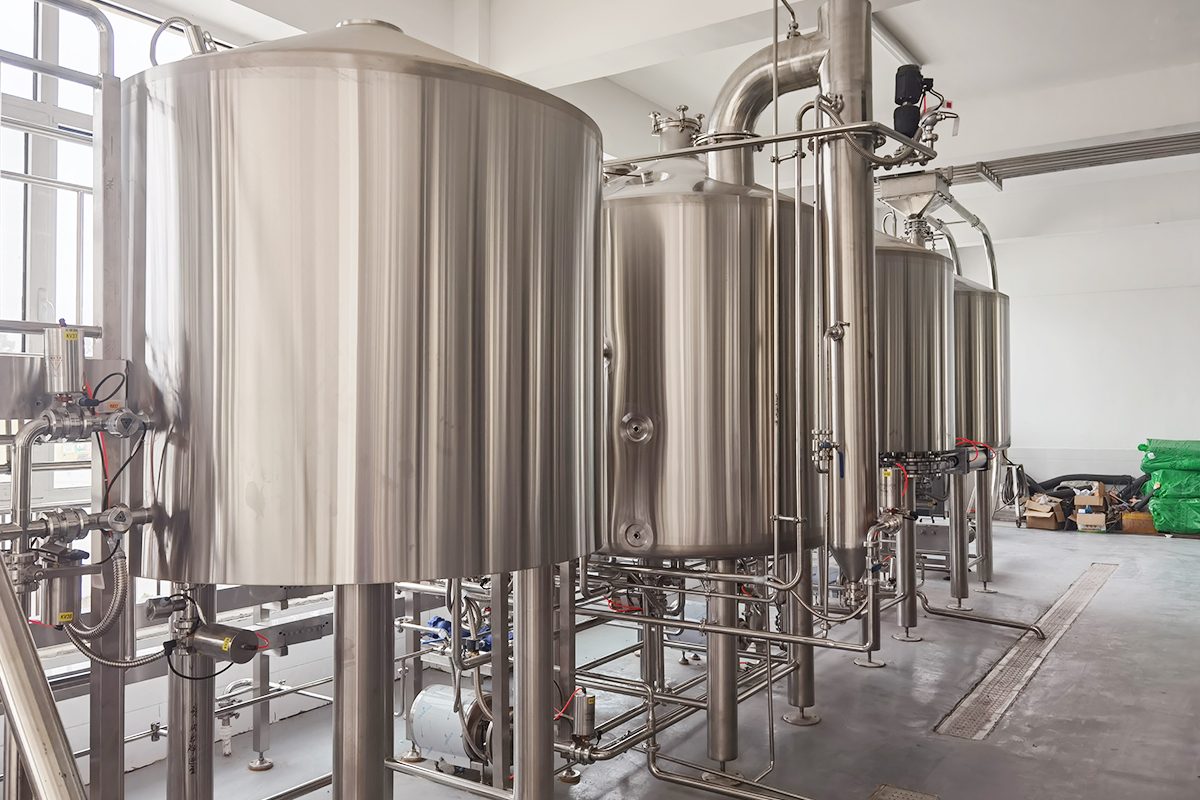
Comparing CLT and HLT
Purpose
- CLT: The CLT stores chilled water, primarily used for cooling the wort after boiling and for regulating fermentation temperatures. It plays a critical role in reducing wort temperature to the appropriate fermentation levels and in maintaining temperature control during fermentation.
- HLT: The HLT stores heated water, or hot liquor, which is used during mashing and sparging. The hot liquor facilitates the extraction of fermentable sugars from malted grains and is also used for cleaning and preheating brewing equipment.
Temperature
- CLT: The water in the CLT is kept at a cold temperature, typically between 2-4°C (35-40°F), which is optimal for rapidly cooling the wort. Maintaining low temperatures prevents contamination and ensures efficient heat exchange during the cooling process.
- HLT: The HLT operates at much higher temperatures, generally between 65-80°C (149-176°F), depending on the specific stage of brewing (mashing or sparging). Precise temperature control is crucial in the HLT to ensure proper enzyme activity during mashing and sugar extraction during sparging.
Energy Requirements
- CLT: The CLT requires refrigeration or an industrial-grade chiller to maintain its low temperatures. This cooling process consumes a significant amount of energy, particularly in high-volume breweries where a large quantity of cold liquor is needed for wort cooling.
- HLT: The HLT requires a heat source, typically an electric heating element or a gas burner, to maintain the necessary high temperatures. While the HLT also has high energy demands, particularly when heating large volumes of water, energy recovery systems can be employed by recycling heat from other parts of the brewing process.
Material and Construction
- CLT: Cold Liquor Tanks are typically constructed from stainless steel to ensure durability, corrosion resistance, and ease of cleaning. CLTs are heavily insulated to prevent external heat from warming the stored water, helping to reduce energy consumption.
- HLT: Like CLTs, Hot Liquor Tanks are also made from stainless steel to withstand high temperatures and resist corrosion. The HLT is designed with efficient insulation to retain heat and minimize energy loss, ensuring that the water stays at the desired temperature for brewing and cleaning processes.
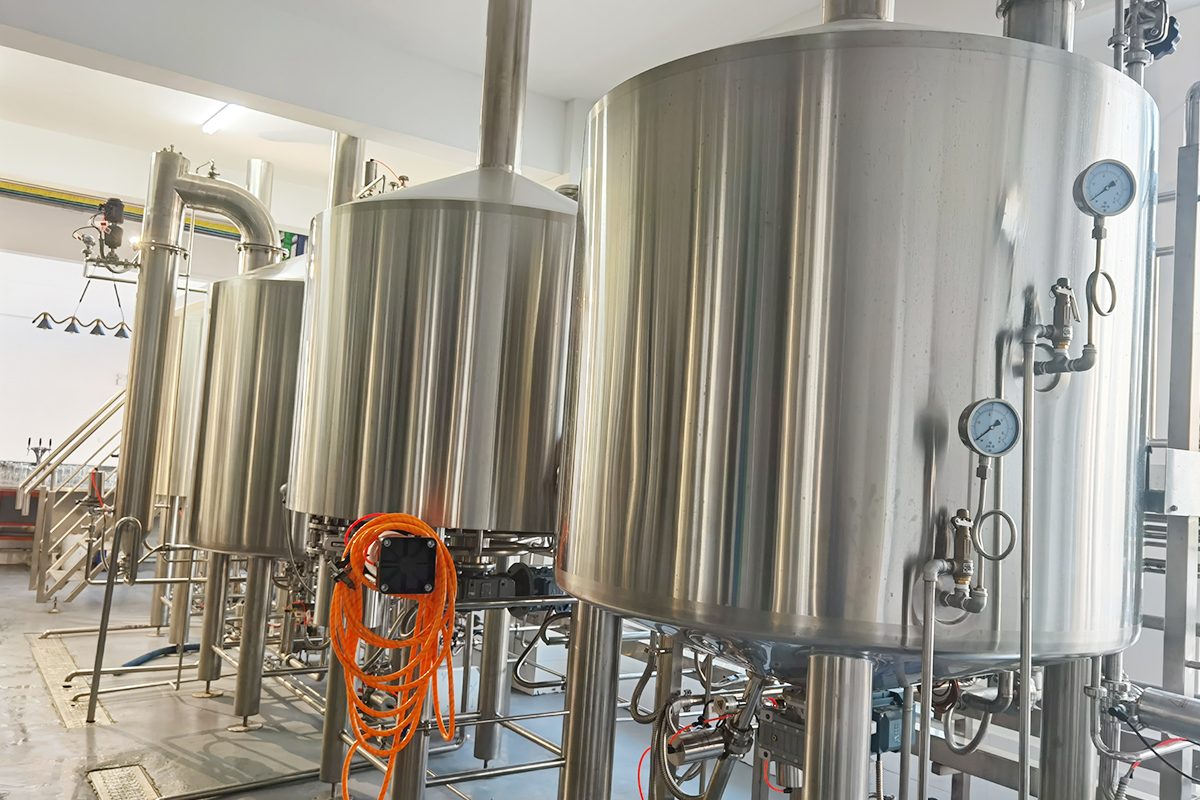
Integration of CLT and HLT in the Brewing Process
Brewing System Configurations
In modern brewing systems, the cold liquor tank (CLT) and hot liquor tank (HLT) are integrated as essential components of the brewing setup. They are designed to support various stages of the brewing process, from mashing to wort cooling. Depending on the size and complexity of the brewery, system configurations can vary:
- Basic Systems: In smaller breweries, the CLT and HLT are often standalone vessels connected to a heat exchanger for wort cooling and to a mash tun for mashing and sparging.
- Advanced Systems: In larger brewing systems, these tanks are part of a fully integrated setup, connected to automated controls, heat recovery systems, and multiple brewing vessels, allowing for greater efficiency and precision. This setup often includes temperature sensors, monitoring systems, and energy optimization technologies.
Interdependence of Hot and Cold Liquor Tanks
Although the CLT and HLT serve distinct functions, they are interdependent and work together to ensure smooth brewing operations:
- Wort Cooling: After the boiling stage, the CLT supplies cold water to cool the wort in the heat exchanger. The heat that the cold liquor absorbs from the wort can then be redirected, using heat recovery technology, to the HLT. This warmed water can be used in the next brewing cycle, reducing the need to reheat fresh water.
- Mashing and Sparging: The HLT supplies hot liquor to the mash tun for sparging, ensuring the proper extraction of fermentable sugars. After this process, excess water can sometimes be cooled down and redirected to the CLT, creating a closed-loop system for water use. This interplay between the CLT and HLT minimizes waste and ensures that both cold and hot water are available exactly when needed.
Energy Efficiency Considerations
Energy efficiency is a major concern in breweries, and integrating the CLT and HLT in an intelligent brewing system can significantly reduce energy consumption:
- Heat Recovery Systems: By capturing the heat from the wort cooling process and transferring it to the hot liquor for the next brew cycle, breweries can reduce their reliance on external heating elements or gas burners, cutting down energy use.
- Insulation: Both the CLT and HLT are well-insulated to minimize heat loss or gain, ensuring that minimal energy is required to maintain their respective temperatures. This reduces the need for continuous energy input to reheat or rechill water.
- Water Recirculation: Many breweries use water recirculation systems, where water from the HLT can be cooled and stored in the CLT, or vice versa. This reduces water waste and minimizes the need for fresh heating or chilling of water, which in turn lowers energy consumption.
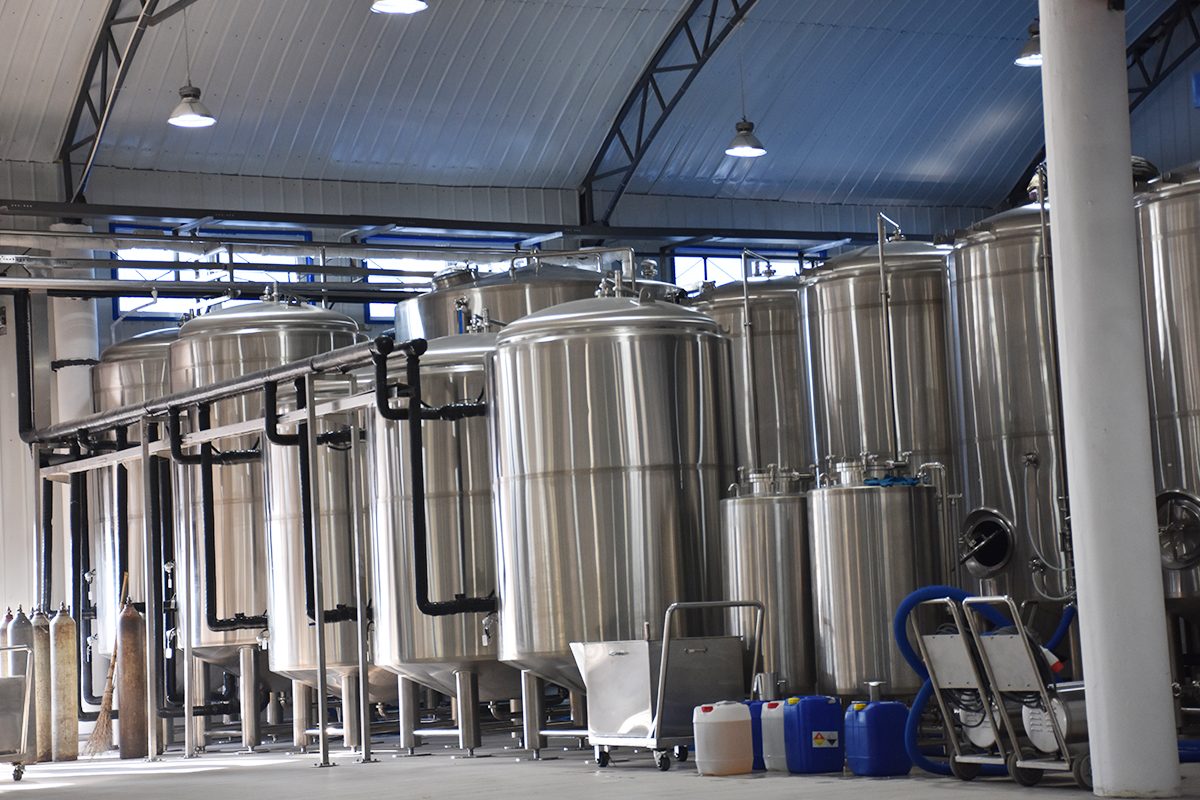
Importance of Sizing HLT and CLT
How to Size Hot and Cold Liquor Tanks for Your Brewery
Properly sizing your hot liquor tank (HLT) and cold liquor tank (CLT) can help ensure a smooth and efficient brewing operation. Tanks that are too small may lead to production delays, while oversized tanks can result in energy inefficiencies and increased costs. The goal is to find the optimal balance based on your brewery’s production volume and schedule:
- HLT Sizing: The HLT must be large enough to supply the necessary hot water for mashing, sparging, and cleaning operations. As a general rule, the HLT capacity should be at least 1.25 to 1.5 times the volume of your brew kettle, ensuring enough hot liquor is available for multiple processes within a single brew day.
- CLT Sizing: The CLT should be sized to provide enough cold water to cool down the wort efficiently. The required CLT capacity is typically about the same as the batch size, ensuring you have enough cold liquor to quickly cool the wort through the heat exchanger.
Factors Influencing Tank Size
Several factors will influence the appropriate size of your hot liquor tank and cold liquor tank:
- Brewery Production Volume: The larger the brewery and the higher the production capacity, the larger both the HLT and CLT need to be. High-production breweries often require multiple batches in a single day, meaning the tanks need to accommodate a continuous supply of hot and cold water.
- Batch Size: The size of your brewing batches directly impacts the size of the tanks. Larger batches require more hot liquor for mashing and sparging and more cold liquor for wort cooling.
- Brewing Frequency: Breweries that produce multiple batches per day or week require larger tanks to avoid downtime between brews. A larger HLT ensures sufficient hot water supply for back-to-back batches, while a larger CLT ensures that wort can be cooled quickly without waiting for water to be re-chilled.
- Heat and Cooling Recovery Systems: If your brewery uses advanced heat recovery systems, this may allow for smaller HLT and CLT sizes, as you can recapture and reuse water more efficiently. In these cases, the tanks may not need to store large volumes of water simultaneously, as water can be recycled throughout the brewing process.
- Energy Efficiency Goals: Larger tanks often consume more energy for heating and cooling, so brewers need to carefully assess their energy usage and balance the tank size with energy efficiency. Insulated tanks can help reduce energy demands, but sizing must be carefully calculated to avoid waste.
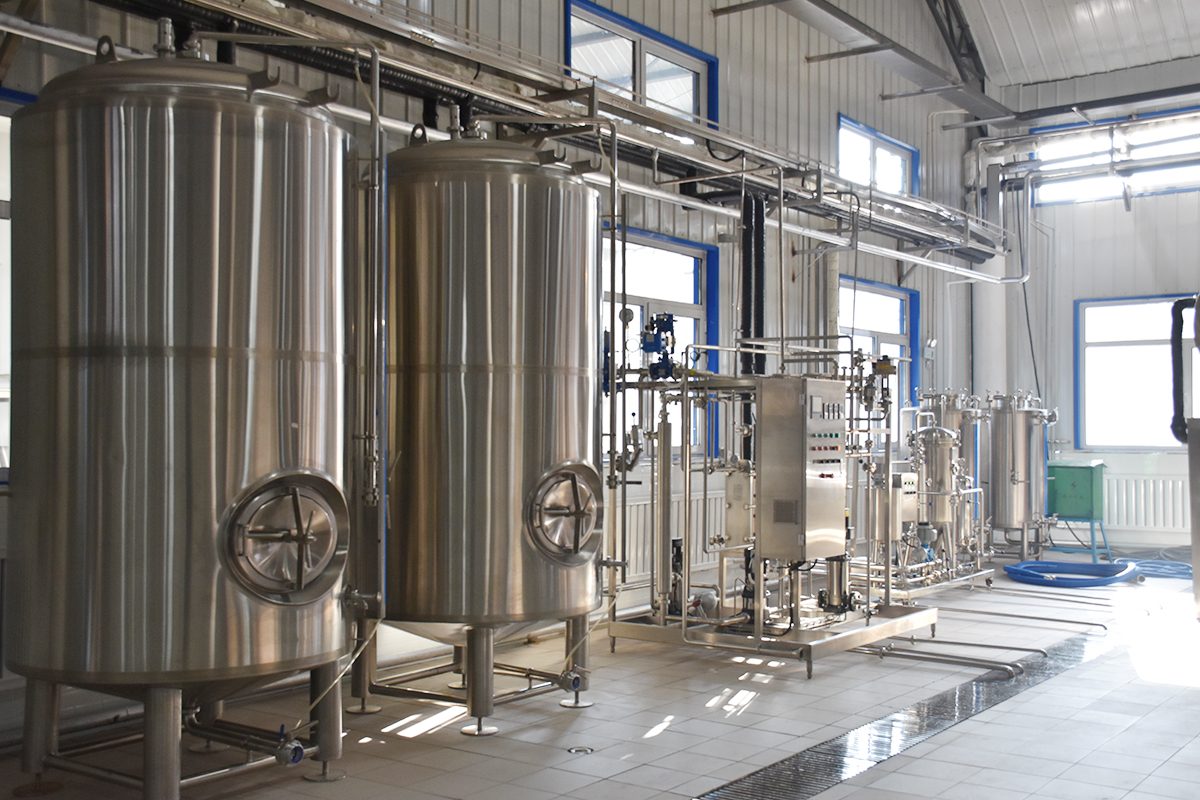
Material Selection for CLT and HLT
Stainless Steel VS Alternative Materials
When selecting materials for the cold liquor tank (CLT) and hot liquor tank (HLT), stainless steel is the industry standard due to its durability, corrosion resistance, and ease of cleaning. It is non-reactive and ensures that the water stored in it remains uncontaminated, which preserves the quality of the brewing process. Stainless steel also offers excellent longevity, making it ideal for long-term brewery use.
- Stainless Steel: Both the CLT and HLT are typically constructed from 304 or 316-grade stainless steel, known for its high resistance to corrosion and extreme temperatures. This makes it particularly suited for the varying temperature requirements in both cold and hot liquor tanks. Stainless steel is also easy to sanitize, ensuring that the water used in brewing is free from contaminants.
- Alternative Materials: While stainless steel is the most common choice, some smaller breweries may explore alternative materials such as food-grade plastic or fiberglass. These materials are generally less expensive but lack the heat resistance, durability, and long-term reliability of stainless steel. They are also more prone to wear and tear, making them less suitable for large-scale, high-production breweries. For most professional setups, stainless steel remains the superior option.
Insulation and Heat Retention
Proper insulation is essential for both CLT and HLT to maintain their respective temperatures efficiently.
- CLT: The CLT must retain its cold temperature, typically between 2-4°C (35-40°F). To achieve this, the tank is often heavily insulated with materials like polyurethane foam or mineral wool to minimize heat gain from the surrounding environment. Adequate insulation reduces the energy required to maintain chilled water temperature, which can help cool wort quickly and efficiently.
- HLT: The HLT, on the other hand, must maintain hot temperatures, typically between 65-80°C (149-176°F), for mashing and sparging. Insulation in the HLT is equally important to prevent heat loss, which can lead to increased energy consumption as the water must be reheated frequently. Materials like ceramic fiber or rock wool are commonly used to provide thermal insulation. Proper insulation not only helps retain heat but also contributes to more energy-efficient brewing by minimizing heat fluctuations and energy use.
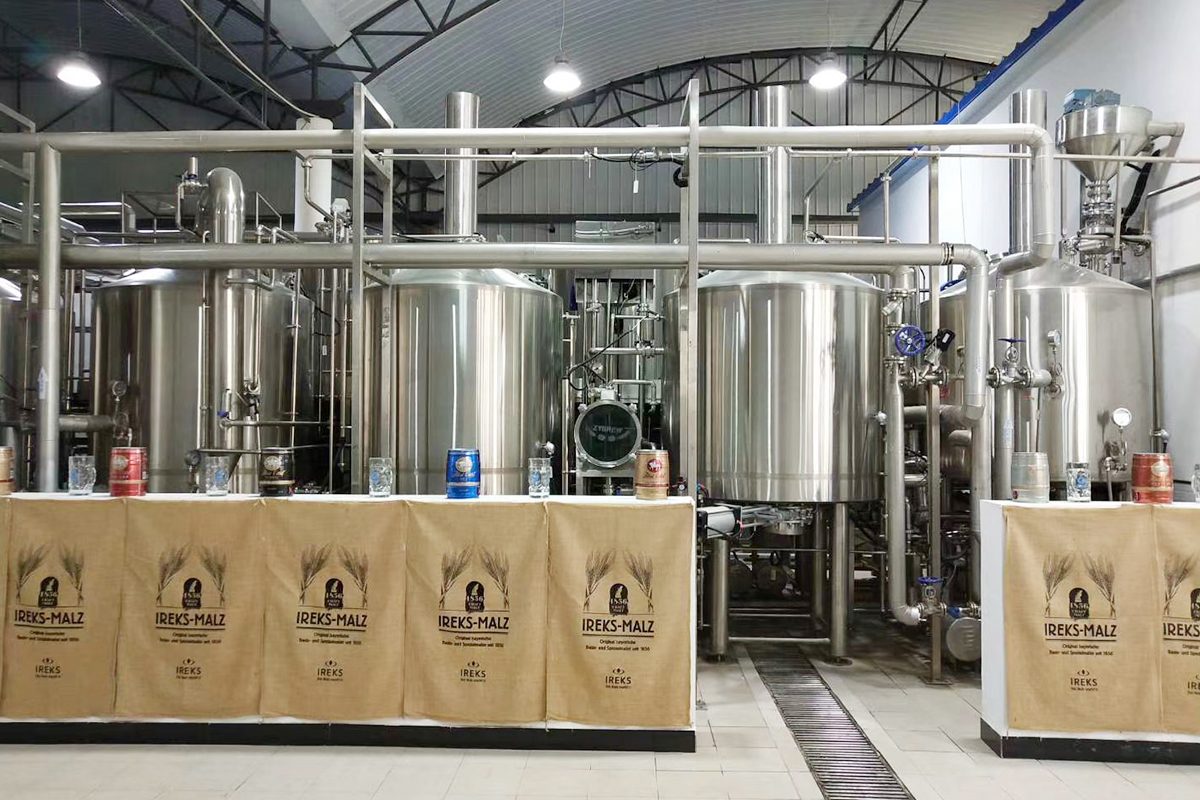
Maintenance and Cleaning of CLT and HLT
Cleaning Protocols for Hot Liquor Tanks (HLT)
Regular cleaning of your hot liquor tank (HLT) ensures brewing efficiency and prevents contamination. Hot water, especially when used in mashing and sparging, can leave behind mineral deposits like calcium carbonate, which can affect both the efficiency of the HLT and the quality of the brewing process. The recommended cleaning protocols include:
- Rinse with Hot Water: After each use, the HLT should be rinsed thoroughly with hot water to remove any residue or buildup.
- CIP (Clean-in-Place) Systems: Many breweries utilize CIP systems that allow for automated cleaning using caustic solutions or specialized brewery cleaning agents. These solutions help dissolve mineral deposits and other organic residues that might accumulate over time.
- Acid Washes: For more thorough cleaning, particularly to remove mineral buildup like limescale, an acid-based cleaner can be used. This ensures that all deposits are removed without damaging the stainless steel tank.
- Final Rinse: After cleaning with chemical agents, a final rinse with clean water is essential to ensure no residual chemicals remain that could affect future brews.
Cleaning Protocols for Cold Liquor Tanks (CLT)
The cold liquor tank (CLT) is primarily used for storing chilled water, but it still requires routine cleaning to ensure the water remains free from contaminants. While there is less concern for mineral deposits in cold water, bacteria, and biofilm can still form if the tank is not regularly cleaned. Cleaning protocols include:
- Drain and Rinse: After each brewing cycle, the CLT should be drained and thoroughly rinsed with clean water to remove any potential contaminants.
- Sanitization: Regular sanitization using a no-rinse sanitizer ensures that any microbial buildup is eliminated, keeping the cold liquor pure and safe for use in wort cooling and fermentation.
- Periodic Deep Cleaning: At scheduled intervals, the CLT should undergo deep cleaning using a caustic solution or specialized brewery cleaning agents, followed by a complete rinse to prevent any chemical contamination of the stored water.
- Inspect for Biofilm: Biofilm can develop in cold environments, so it’s important to inspect and remove any signs of microbial growth using mechanical cleaning if needed.
Preventive Maintenance Practices
Preventive maintenance of HLTs and CLTs can ensure their longevity and efficiency. Implementing regular maintenance checks will help avoid downtime and costly repairs. Recommended practices include:
- Inspect Seals and Valves: Regularly check the tank seals, gaskets, and valves for signs of wear or leaks. Any damaged components should be replaced immediately to maintain the integrity of the tanks.
- Temperature Control Calibration: For both tanks, ensure that the temperature control systems (heating elements for HLT, and chilling systems for CLT) are functioning properly. Regular calibration of temperature sensors ensures precise control and efficiency.
- Check for Corrosion or Damage: Inspect the interior of both tanks for any signs of corrosion, especially in stainless steel tanks. Even though stainless steel is highly resistant to corrosion, damage from aggressive cleaning agents or other factors can occur over time.
- Regular Descaling: For HLTs, periodic descaling is necessary to remove mineral buildup that may affect the tank’s efficiency. In CLTs, while scaling is less of a concern, inspecting for microbial growth and contamination remains important.
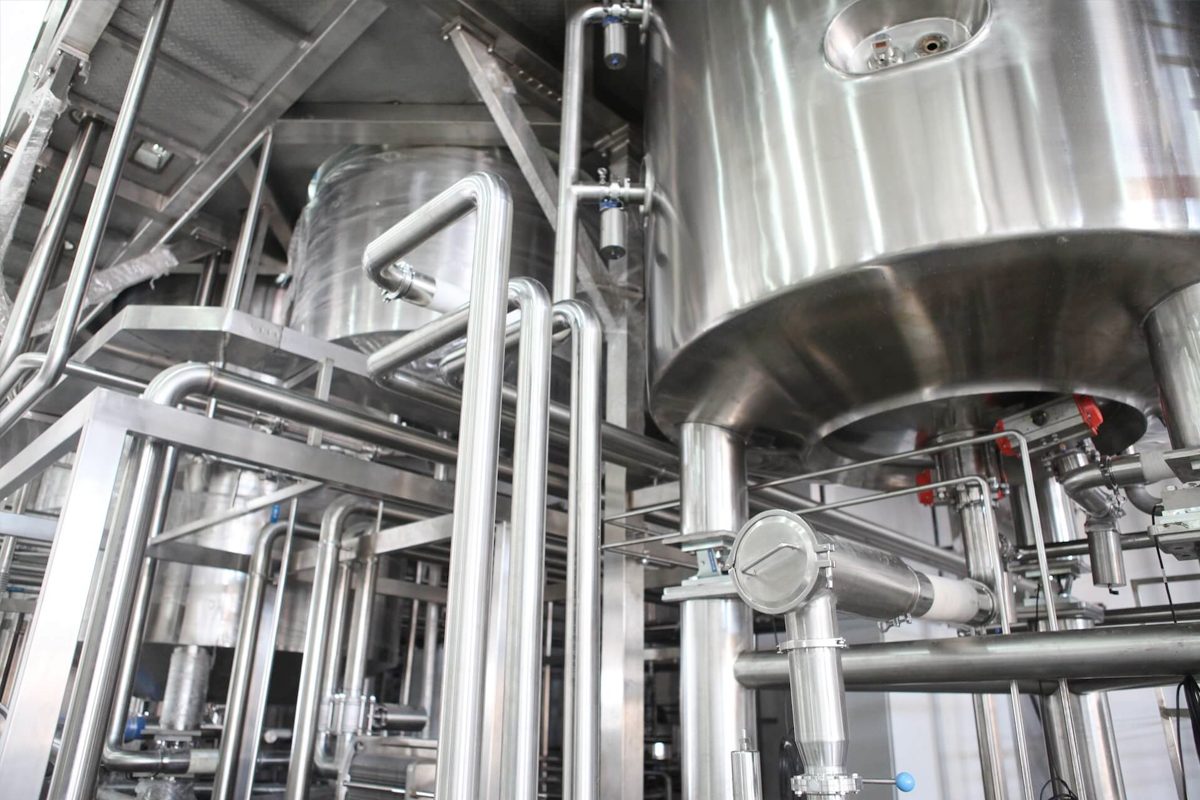
Summary
